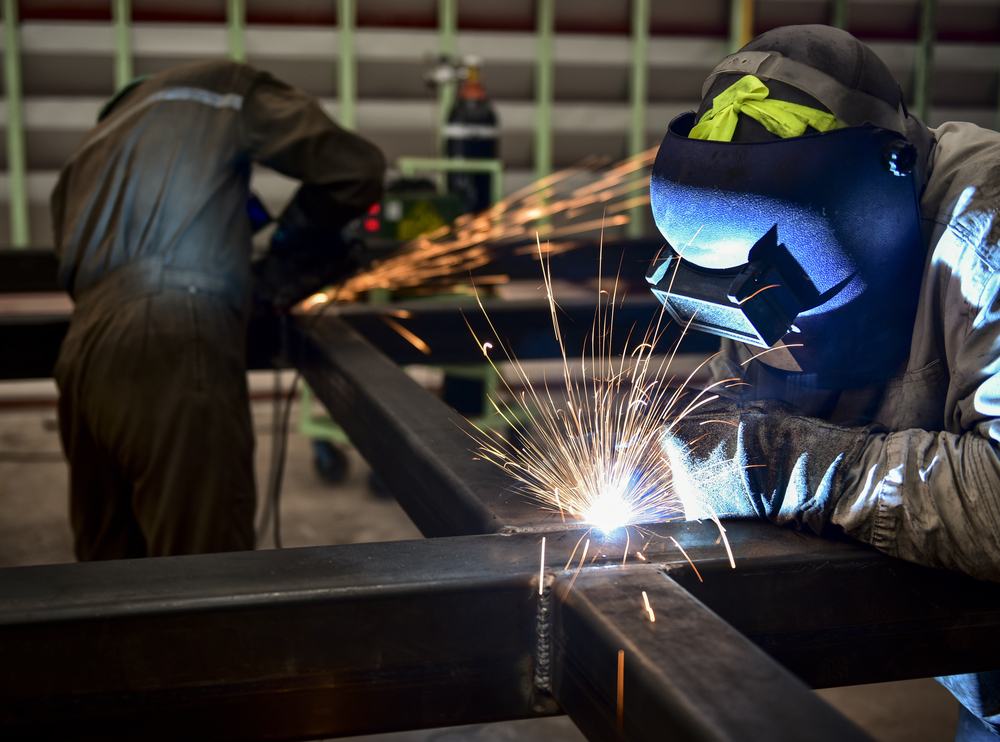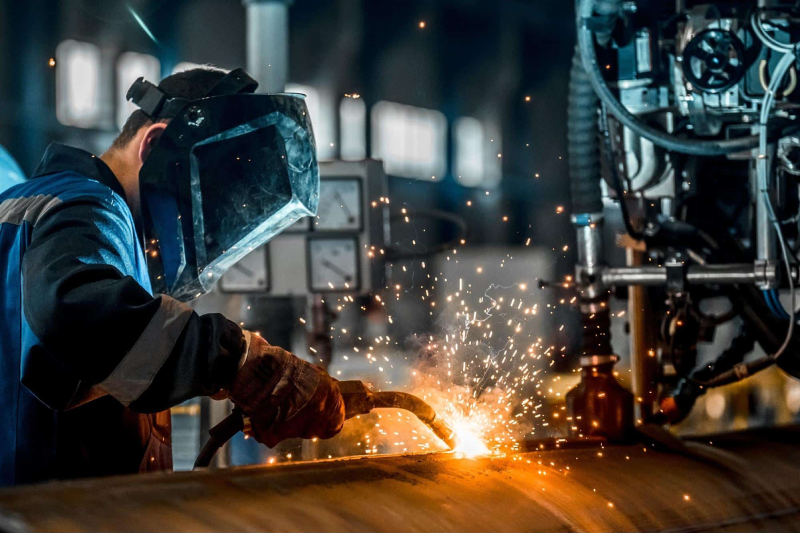Typical Welding Repair Service Issues and Just How to Address Them Successfully
Welding repair services usually come across a variety of concerns that can jeopardize the stability of the final product. Common problems include poor infiltration, porosity, and misalignment, to name a few. Each flaw presents special difficulties that require specific methods for resolution. Comprehending these concerns is essential for welders intending to improve their outcomes and abilities. This discussion will explore these typical welding repair work problems and reliable methods to address them.
Inadequate Penetration
Poor penetration happens when the weld metal falls short to completely fuse with the base material, causing weak joints and prospective structural failings. This problem often originates from not enough warmth input, incorrect electrode angle, or incorrect welding speed. Welders may come across inadequate penetration as a result of a mistake of the essential criteria for a details product density or type. Additionally, contamination on the base material's surface area can impede efficient bonding, intensifying the trouble. To address poor infiltration, welders need to guarantee proper settings on their tools and preserve a tidy work surface. Normal examination of welds is advised to determine any type of shortages early, permitting timely adjustments and the avoidance of jeopardized architectural honesty in welded assemblies.
Porosity
Porosity is a common problem in bonded joints that manifests as tiny gas bubbles caught within the weld steel. This defect can compromise the stability of the weld, causing decreased strength and possible failure under stress and anxiety. Montana Mobile Welding and Repair Belgrade Fabrication. Porosity generally arises from contamination, moisture, or incorrect welding methods, which allow gases to escape into the molten weld pool. To address porosity, welders ought to assure appropriate surface prep work, keep a tidy functioning setting, and use appropriate welding specifications. Additionally, picking the best filler material and securing gas can mitigate gas entrapment. Routine inspection and testing of welds can aid recognize porosity early, assuring prompt corrective activities are taken, therefore protecting the high quality and integrity of the welded structure
Misalignment
Misalignment in welding can develop from various factors, consisting of improper arrangement and thermal growth. Understanding the origin triggers is vital for reliable resolution. Several improvement strategies are offered to realign components and ensure architectural stability.
Reasons for Misalignment
Welding imbalance typically originates from a variety of underlying problems that can compromise architectural stability. One main cause is inappropriate fit-up of components before welding, which can bring about gaps and irregular surface areas. Variants in thermal development throughout the welding process can likewise cause distortion, especially if the products being signed up with have various coefficients of growth. Furthermore, insufficient clamping and fixturing may fail to hold components firmly in position, causing movement during welding. Poorly maintained tools, including welding equipments and tools, may introduce disparities in the weld bead, additional adding to imbalance. Finally, operator error, coming from not enough training or experience, can additionally play a substantial function in producing misaligned welds.
Correction Techniques Offered
Attending to imbalance effectively needs a mix of restorative methods customized to the particular problems at hand. One typical method is making use of components or jigs to hold components in the proper position during welding, guaranteeing constant alignment. Furthermore, pre-heating the materials can aid minimize distortion and improve fit-up. For considerable imbalance, mechanical realignment methods, such as utilizing hydraulic jacks or clamps, can be used to correct the setting prior to welding. Post-weld warm therapy might likewise be essential to eliminate tensions brought on by imbalance. Mindful evaluation and adjustment during the arrangement stage can prevent imbalance concerns from coming to be significant problems, advertising a smoother welding procedure and improving general architectural stability.
Distortion
Distortion is an usual difficulty in welding that can arise from numerous aspects, including uneven heating & cooling. Recognizing the reasons for distortion is crucial for executing effective avoidance strategies. Addressing this issue not only enhances architectural stability yet additionally enhances the total quality of the weld.
Reasons for Distortion
When subjected to the intense heat of welding, products usually go through modifications that can bring about distortion. This phenomenon primarily arises from thermal expansion and tightening during the welding process. As the weld location warms up, the product increases; upon cooling, it gets, which can create interior tensions. In enhancement, uneven home heating across a workpiece can aggravate these tensions, resulting in warping or flexing. The kind of product also plays a significant role; steels with varying thermal conductivity and coefficients of expansion might react in a different way, bring about unforeseeable distortions. Bad joint design and insufficient fixturing can add to imbalance throughout welding, enhancing the possibility of distortion. Recognizing these reasons is necessary for efficient welding repair and prevention strategies.
Avoidance Techniques
Effective prevention techniques for distortion throughout welding focus on managing warmth input and making sure proper joint style. Maintaining a consistent warm input assists to minimize thermal growth and contraction, which can result in distortion. Utilizing techniques such as preheating the work surface can likewise minimize the temperature slope, advertising uniform heating. Additionally, choosing proper joint layouts, such as T-joints or lap joints, can improve security and lower anxiety concentrations. Executing correct fixturing to protect the workpieces in place further aids in maintaining alignment during the welding procedure. Staggered welding series can disperse warm much more evenly, preventing local distortion. cored wire By using these approaches, welders can substantially reduce the possibility of distortion and enhance the general quality of their welds.
Splitting
Cracking is an usual problem encountered in welding fixings, often resulting from various variables such as improper cooling prices, product choice, or poor joint preparation. The incident of cracks can significantly jeopardize the stability of the weld, resulting in prospective failings throughout procedure. To address this problem, welders need to first analyze the root creates, guaranteeing that materials are compatible and suitably chosen for the particular application. Additionally, controlling the air conditioning price throughout the welding process is crucial; fast cooling can generate stress and anxiety and lead to splitting. Correct joint layout and preparation additionally add to minimizing the threat. Executing these approaches can enhance weld quality and resilience, ultimately lowering the probability of fracturing in ended up weldments.

Insufficient Fusion
A considerable issue in welding fixings is insufficient combination, which takes place when the weld metal does not sufficiently bond with the base product or previous weld passes - Montana Mobile Welding and Repair Belgrade Welding. This problem can bring about weaknesses in the joint, possibly compromising the integrity of the bonded framework. bronze welding Factors adding to insufficient fusion consist of inadequate heat input, inappropriate welding technique, and contamination of the surfaces being joined. To address this problem properly, welders ought to assure proper pre-weld cleansing and surface prep work, in addition to adjust their welding parameters to attain adequate infiltration and blend. Routine evaluation during the welding procedure can also help determine insufficient fusion early, permitting prompt corrective steps to enhance the total top quality of the weld
Overheating
While welding repair work can improve structural integrity, overheating offers a considerable challenge that can bring about material degradation. Excessive heat during welding can alter the mechanical homes of metals, resulting in reduced strength, raised brittleness, and warping. This phenomenon is particularly important in high-stress applications where architectural reliability is vital. Identifying getting too hot can entail visual examinations for discoloration or distortion, along with keeping track of temperature level throughout the welding procedure. To reduce the dangers related to overheating, welders should employ appropriate techniques, such as controlling warm input, readjusting travel speed, and making use of suitable filler products. Additionally, applying pre- and post-weld warmth treatments can assist recover material buildings and enhance the general top quality of the repair service, guaranteeing long-lasting performance and safety.
Regularly Asked Concerns
What Are the Common Indicators of a Welding Problem?

Just How Can I Evaluate My Welds for Top quality?
To evaluate welds for top quality, one can utilize aesthetic evaluations, ultrasonic screening, and radiographic approaches. Each strategy assures architectural stability, recognizes flaws, and verifies adherence to specified requirements, inevitably improving the integrity of the bonded joints.
What Safety and security Preventative Measures Should I Take While Welding?
When welding, one should prioritize safety by putting on proper individual protective tools, guaranteeing appropriate air flow, protecting combustible products away, keeping a clean work space, and understanding environments to avoid accidents and injuries.
Can I Fix a Weld Without Renovating the Entire Joint?
Fixing a weld without redesigning the entire joint is feasible, depending upon the damages (Montana Mobile Welding and Repair Belgrade Fabrication). Methods such as grinding, adding filler material, or using a welding procedure can successfully attend to particular flaws while maintaining the surrounding structure
What Tools Are Necessary for Efficient Welding Repairs?
Vital tools for efficient welding repairs include a welding device, wire brush, grinder, protective equipment, clamps, and filler materials. Each device plays an essential role in making certain top quality and safety and security throughout the repair service process. Porosity normally arises from contamination, dampness, or improper welding methods, which allow gases to run additional hints away into the molten weld pool. Poorly kept equipment, including welding machines and devices, may present inconsistencies in the weld bead, more contributing to imbalance. When subjected to the intense warm of welding, products usually undergo modifications that can lead to distortion. Splitting is an usual problem run into in welding repairs, often resulting from various factors such as incorrect air conditioning prices, product selection, or poor joint preparation. A substantial concern in welding repair services is insufficient blend, which happens when the weld metal does not properly bond with the base product or previous weld passes.